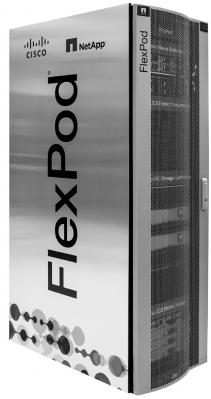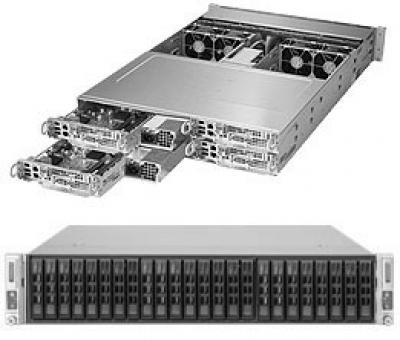(Hyper) Converged Infrastructure
In a traditional infrastructure deployment, compute, storage and networking are deployed and managed independently, often based on components from multiple vendors. In a converged infrastructure, the compute, storage, and network components are designed, assembled, and delivered by one vendor and managed as one system, typically deployed in one or more racks. A converged infrastructure minimizes compatibility issues between servers, storage systems and network devices while also reducing costs for cabling, cooling, power and floor space.
The technology is usually difficult to expand on-demand, requiring the deployment of another rack of infrastructure to add new resources. The following picture shows an example of a converged system.
While in a converged infrastructure the infrastructure is deployed as individual components in a rack, a hyperconverged infrastructure (HCI) brings together the same components within a single server node.
A hyperconverged infrastructure comprises a large number of identical physical servers from one vendor with direct attached storage in the server and special software that manages all servers, storage, and networks as one cluster running virtual machines.
The technology is easy to expand on-demand, by adding servers to the hyperconverged cluster. The following picture shows an example of a hyperconverged system.
Hyperconverged systems are an ideal candidate for deploying VDI environments (see section 12.3.3), because the storage is close to the compute (as it is in the same box) and the solution scales well with the rise of the number of users.
A big advantage of converged and hyperconverged infrastructures is having to deal with one firmware and software vendor. Vendors of hyperconverged infrastructures provide all updates for compute, storage and networking in one service pack and deploying these patches is typically much easier than deploying upgrades in all individual components in a traditional infrastructure deployment.
Drawbacks of converged and hyperconverged infrastructures are:
- Vendor lock-in – the solution is only beneficial if all infrastructure is from the same vendor
- Scaling can only be done in fixed building blocks – if more storage is needed, compute must also be purchased. This can have a side effect: since some software licenses are based on the number of used CPUs or CPU cores, adding storage also means adding CPUs and hence leads to extra license costs.
This entry was posted on Friday 21 October 2016
 Dutch
Dutch
